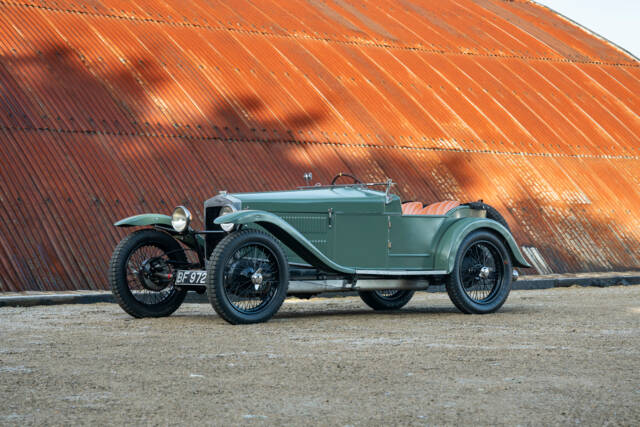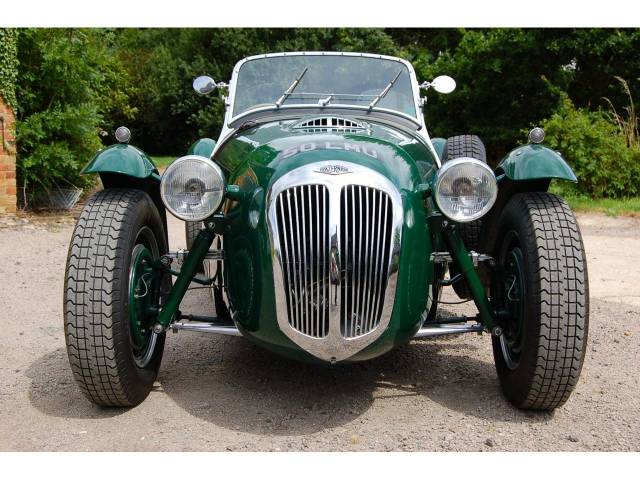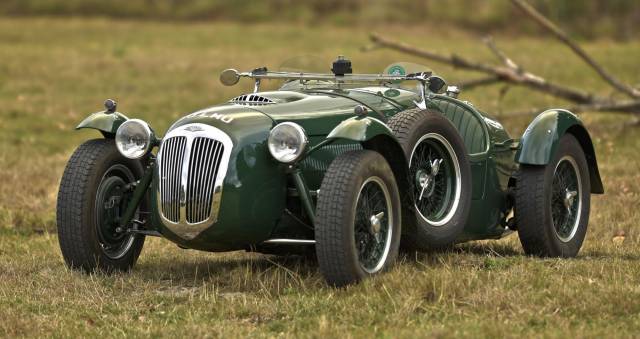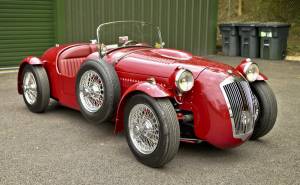- Car
- Frazer Nash (4 offers)
Frazer Nash Classic Cars for Sale
Frazer Nash produced a range of low-volume, hand-built British sports cars renowned for their innovative chain-drive transmissions, close connection with motorsport, and engineering links to BMW and Bristol. Only a handful of post-war Frazer Nash cars were built—today, most still exist, making them a rare sight in historic racing and concours events. Their heritage spans track success, inventive technology, and focussed, purposeful design.
Search results

1926 | Frazer Nash Super Sports
Powerful 3.3 Ford Model A engine with Riley OHV head

1956 | Frazer Nash Le Mans Replica
Frazer Nash LHD Le Mans Rep


History of Frazer Nash
Frazer Nash's history starts in 1922, when Archibald Frazer-Nash established the company in Kingston upon Thames. The early years revolved around lightweight sports cars with chain-driven transmissions, which allowed fast gear changes and emphasised simplicity over luxury. Financial struggles in the late 1920s led to the acquisition of the company by AFN Ltd, controlled by the Aldington family, in 1929. In the 1930s, Frazer Nash became closely connected to BMW as the British importer, selling sporting BMWs under the Frazer Nash-BMW name. By WWII, production had ended on the chain-drive cars, but the company was revived post-war, using BMW and Bristol mechanicals. Motorsport success in prestigious events like Le Mans, the Targa Florio, and Sebring cemented Frazer Nash's reputation. The brand ultimately ceased production in 1957, but its role in British and European motorsport history endures.
Model History
Frazer Nash pre-war production included models such as the Fast Tourer, Falcon, Colmore, Boulogne, and Ulster 100—mostly lightweight, open-bodied two-seaters, often with distinct chain-drive gearboxes. After AFN took over, these chain-driven sports cars continued into the 1930s before transitioning to the Frazer Nash-BMW era, importing and assembling Munich's best. After WWII, the line-up transformed dramatically: the post-war models like the Le Mans Replica, Mille Miglia, Targa Florio, Le Mans Coupé, and Continental were all based around conventional transmissions and BMW-derived or Bristol engines. Production was extremely limited; only about 85 post-war cars were produced. Model highlights include the Le Mans Rep Mk I & II, the rare Le Mans Coupe, Mille Miglia and the Targa Florio, with factory efforts and customer cars succeeding in international race and endurance events.
Highlights and Distinguishing Features
Frazer Nash was distinctive for its technical daring. The early chain-drive transmission was unique among British sportscars, allowing for rapid gear selection with minimal complexity. Models like the Targa Florio were designed directly for motorsport, with single-piece windscreens, bonnet air scoops, and lightweight bodies, while Le Mans Replicas used parallel chassis tubes and racing-specific fuel tanks with minimal interior trim. Post-war cars used the 2.0-litre six-cylinder Bristol engine, itself rooted in pre-war BMW designs, which offered competitive performance well into the 1950s. The company’s factory team achieved overall wins in the Targa Florio (1951), Sebring 12 Hours (1952), and a 3rd place at the 1949 24 Hours of Le Mans.
From a market perspective, Frazer Nash remains rare: the Continental, for instance, accounts for 31% of demand among Frazer Nash listings – the highest, with TT and FN 209 each at 22% and 18% respectively. Supply is particularly spread out, with dominant shares for TT and FN 209 (both at 16% each) and smaller shares across the range—indicative of the extremely small production volumes and corresponding focused collector interest.
Technical Data
Special Editions and Collectible Models
Extremely limited production and continuous evolution means nearly every Frazer Nash is a distinct model. The Le Mans Replica (29 built, 7 as MkII), Targa Florio (15 built), Mille Miglia (21 built, including Mk2), Le Mans Coupé (9 built), and Continental (last model, built 1956–57) are all highly prized. The Targa Florio, in particular, emerged with only 15 examples and competition-focused changes (lightweight, single windscreen, SCCA/Le Mans provenance). Many Le Mans Replicas were later modified for racing use. Some post-war chassis received new replacement bodies, or were rebuilt with racing or lightweight modifications, contributing to a complex web of unique vehicles and occasional, high-quality replicas made to original plans.
Engine, Performance and Handling
Frazer Nash’s post-war models used 2.0-litre six-cylinder engines from Bristol, offering robust performance and impressive reliability by the standards of the time. The cars were designed for competition, so handling was precise and engaging, with light kerb weights and race-tuned geometry. The chain-drive cars offered a direct mechanical sensation and fast gearchanges—albeit with idiosyncratic maintenance requirements. Cars like the Le Mans Replica and Targa Florio were frequently upgraded for racing, including lightweight wheels, aluminium panels, racing fuel tanks, and powerful drum brakes. Their competitive success against period Ferraris and Jaguars in events such as Le Mans and the Mille Miglia demonstrates the effectiveness of Frazer Nash engineering. Notable models include:
- Le Mans Replica Mk I and Mk II: 2.0-litre Bristol straight-six, parallel-tube chassis, lightweight bodywork.
- Targa Florio: Parallel-tube chassis, lightweight competition evolution, minimal interior, SCCA and Le Mans heritage.
- Mille Miglia: Enlarged body, race-friendly modifications, 2.0-litre power.
- Continental: The final Frazer Nash, typical Bristol engine, produced in very limited numbers.
Interior, Comfort, Exterior and Design
Frazer Nash interiors were generally stripped-down, reflecting focus on weight and function; most models lacked luxury fittings, carpets, or even doors on the passenger side of racing-oriented models. Seats were typically basic buckets for support in endurance events. Exteriors differed by model: chain-drive cars sported minimalist, open-bodies, while later race models like the Le Mans Rep and Targa Florio had narrow, purposeful silhouettes, aggressive air intakes, and exposed chassis elements. The brand’s logo—a red-trimmed diamond with the company name—appeared on the nose. Special editions had unique paint colours or racing identifiers. Options included wire wheels (fitted post-Sebring on Targa Florio cars), removable rear panels for quick pit access, and modified dashboards for timed motorsport use. Most cars were custom-specified for competition, contributing to their variety and rarity.
Other Relevant Features
Frazer Nash’s reputation for authenticity and originality has resulted in many surviving examples retaining high degrees of historical accuracy. Their eligibility for events such as the Goodwood Revival or Mille Miglia, and their frequent appearances at Concours d’Elegance, underscore their standing in the historic motorsport community. Some original chassis have been rebodied over time or had racing modifications added, and in recent decades, a handful of faithful replicas have also been constructed from original drawings and parts.
Summary
Frazer Nash classic cars represent the pinnacle of British hand-built racing car engineering, with a legacy rooted in technical innovation, fierce competition pedigree, and minimal mass production. Nearly every surviving Frazer Nash is a well-documented historic racer or a bespoke post-war sports car with verifiable competition provenance. Their rarity in the market is confirmed by the spread of demand across a diverse, highly individualised model range—with the Continental, TT, and FN 209 taking the largest share of interest. Among classic sports car aficionados, Frazer Nash stands for mechanical ingenuity, authenticity, and a historic motorsport pedigree that few marques can equal.



